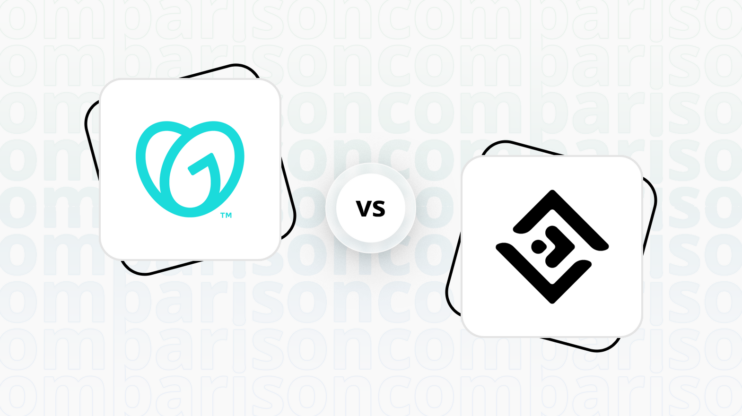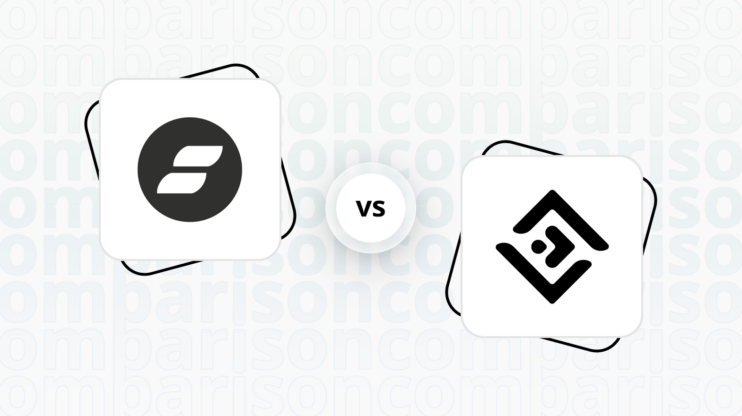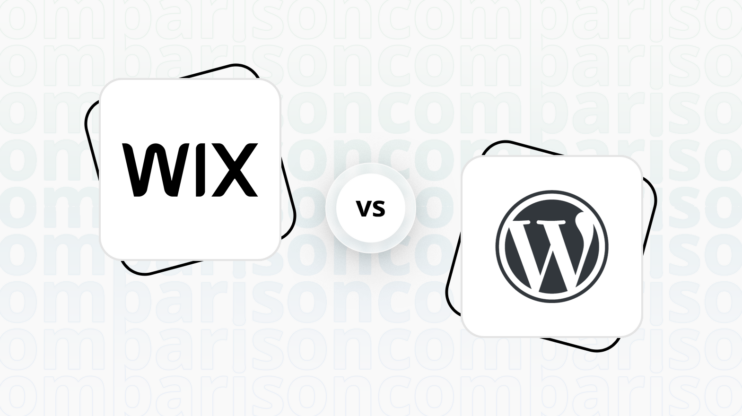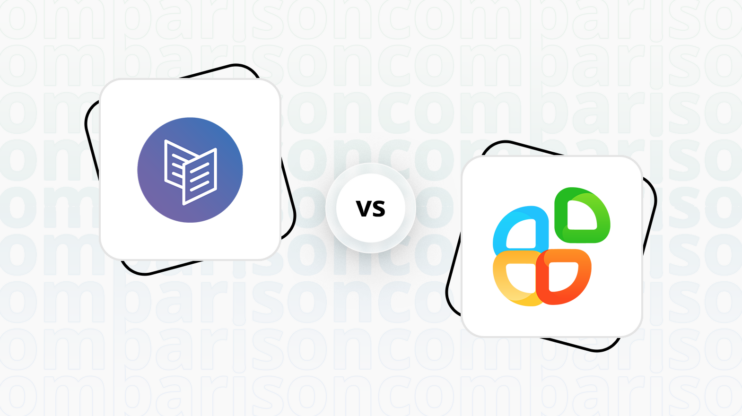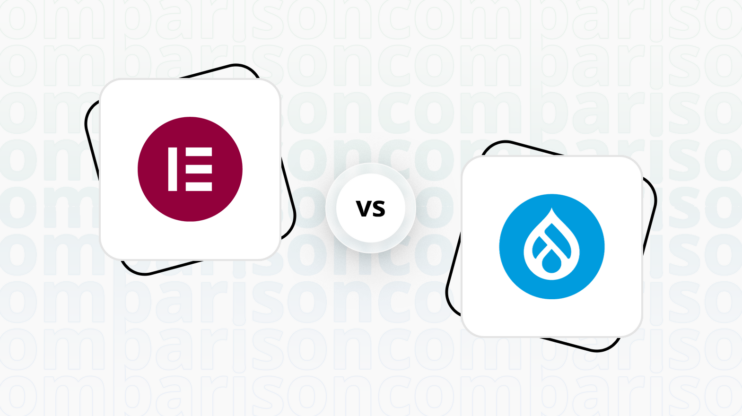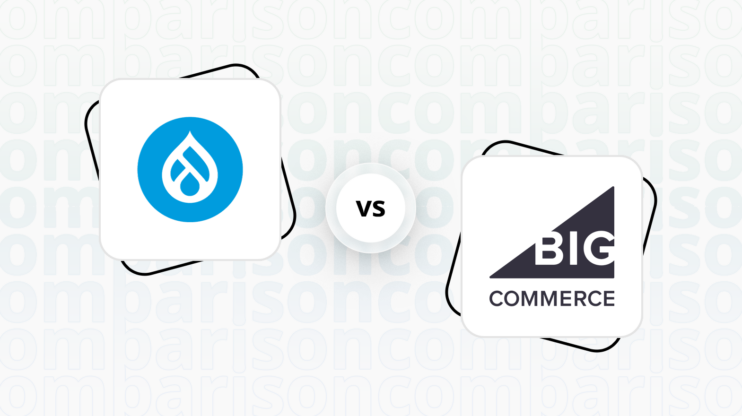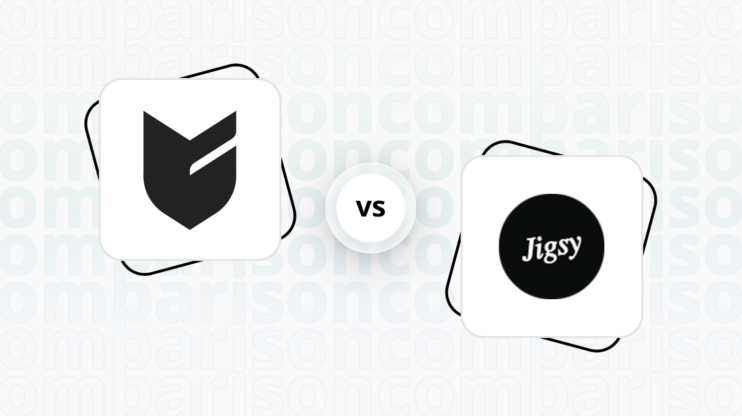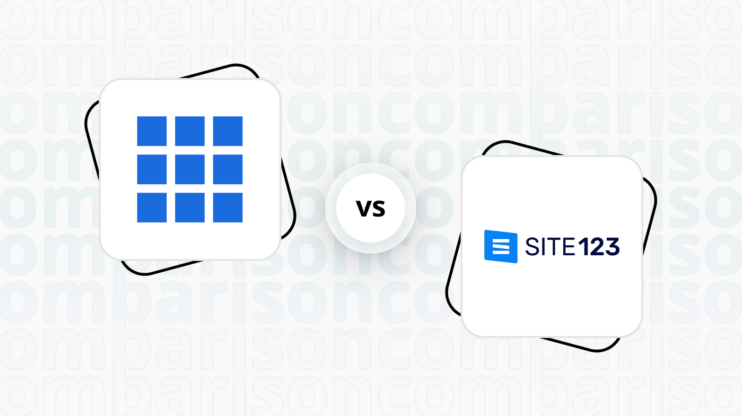Final verdict
GoDaddy and Showit cater to different user needs with their unique strengths, making the choice between them dependent on the specific requirements of the user.
-
GoDaddy (Overall Grade: 7.5/10)
excels as a comprehensive platform offering a wide range of services including domain registration, web hosting, and a user-friendly website builder. It’s particularly strong in areas like hosting quality, website speed optimization, and customer support. GoDaddy is well-suited for users looking for an all-in-one solution that combines ease of use with a robust set of features for website creation and management. -
Showit (Overall Grade: 6.4/10)
stands out for its design flexibility and customization options, especially appealing to creative professionals such as photographers and designers. Despite its lower overall score, Showit offers a unique dual canvas interface for independent design of mobile and desktop views and integrates seamlessly with WordPress for blogging. It’s the preferred choice for users prioritizing design control and those who rely heavily on visual content.

|

|
|
|---|---|---|
|
Design functionalities & templates |
8.0 |
8.5 |
|
Ease of use |
8.2 |
8.6 |
|
Ecommerce |
7.2 |
4.8 |
|
Website Editors |
6.7 |
8.0 |
|
Product testing options |
8.1 |
8.3 |
|
Price |
7.9 |
7.9 |
|
Hosting quality |
7.8 |
7.3 |
|
Website speed optimization |
7.6 |
5.4 |
|
Plugins and integrations |
7.3 |
5.8 |
|
Marketing features |
7.3 |
7.2 |
|
Customer support |
8.5 |
6.4 |
|
Security |
6.8 |
8.3 |
|
AI capabilities |
7.5 |
0 |
|
User Management |
7.3 |
6.7 |
| Overall |
7.5 |
6.4 |
Best for ecommerce
 7.2
7.2
 4.8
4.8
Verdict
: GoDaddy is better suited for users looking for a comprehensive ecommerce solution, while Showit is tailored for creative professionals prioritizing design over advanced ecommerce functionality.
-
GoDaddy
: Offers a wide range of ecommerce features, including payment processing, shipping options, and marketing tools, making it a robust platform for businesses aiming to sell online effectively. -
Showit
: While Showit excels in design flexibility and customization, its ecommerce capabilities are limited, relying on integrations with platforms like Shopify and WooCommerce for selling products online.
Best for informational & business websites
 7.9
7.9
 8.7
8.7
Verdict
: Showit stands out as the superior choice for informational and business websites, especially for creative professionals seeking design flexibility and customization. GoDaddy, while versatile and strong in hosting and support, doesn’t match Showit’s specialized capabilities in this area.
-
GoDaddy
: Offers a comprehensive platform with a variety of services including web hosting, domain registration, and a user-friendly website builder. It’s a solid choice for businesses looking for an all-in-one solution, but may not offer the same level of design customization as Showit. -
Showit
: Designed with creative professionals in mind, Showit excels in providing a high degree of design flexibility and customization. Its unique dual canvas interface allows for independent design of mobile and desktop views, making it the preferred choice for businesses prioritizing design and user experience.
Detailed comparison
Design functionalities & templates
Design FunctionalitiesRepresents how well each platform allows for creative design and customization of websites.Score Components:
- Template Variety (30%): Range and quality of design templates.
- Customization (30%): Flexibility and options for design alterations.
- User Interface (20%): Ease and intuitiveness of the design process.
- Responsiveness (10%): Adaptability to different devices and screen sizes.
- Innovation (10%): Unique design features and tools.
 8.0
8.0
 8.5
8.5
🏆
Winner: Showit.
Showit’s design functionalities and templates score is higher than GoDaddy’s, making it the preferred choice for users who prioritize design flexibility and customization.
GoDaddy provides an extensive collection of over 1500 website templates catering to diverse industries and design preferences. These templates cover business, ecommerce, creative, personal, and non-profit sectors, offering various styles such as modern, classic, bold, minimalist, and content-focused.
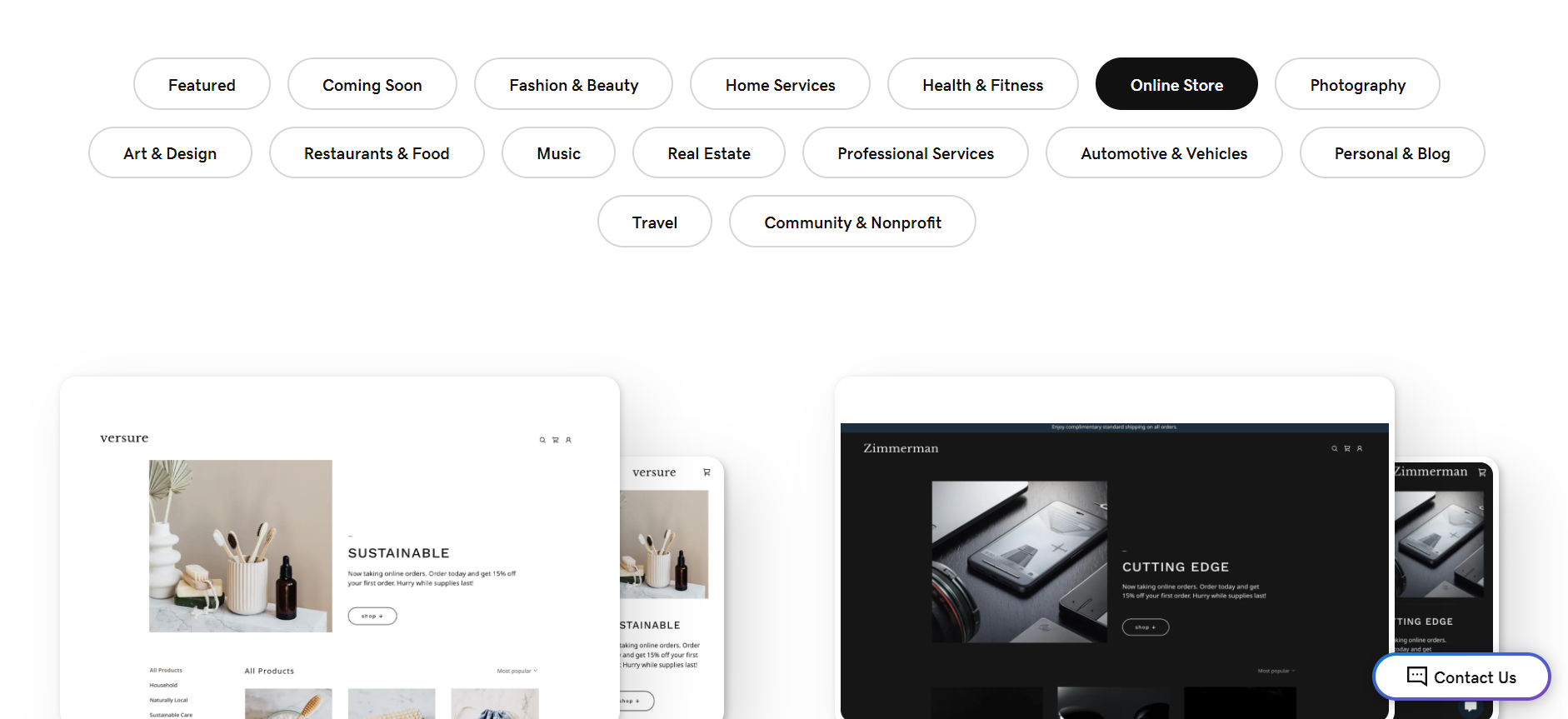

On the other hand, Showit offers a wide variety of templates and designs, catering to diverse aesthetic preferences and business needs. Users can choose from an extensive collection that ranges from minimalist and sleek to bold and artistic, ensuring there’s something for every brand identity.
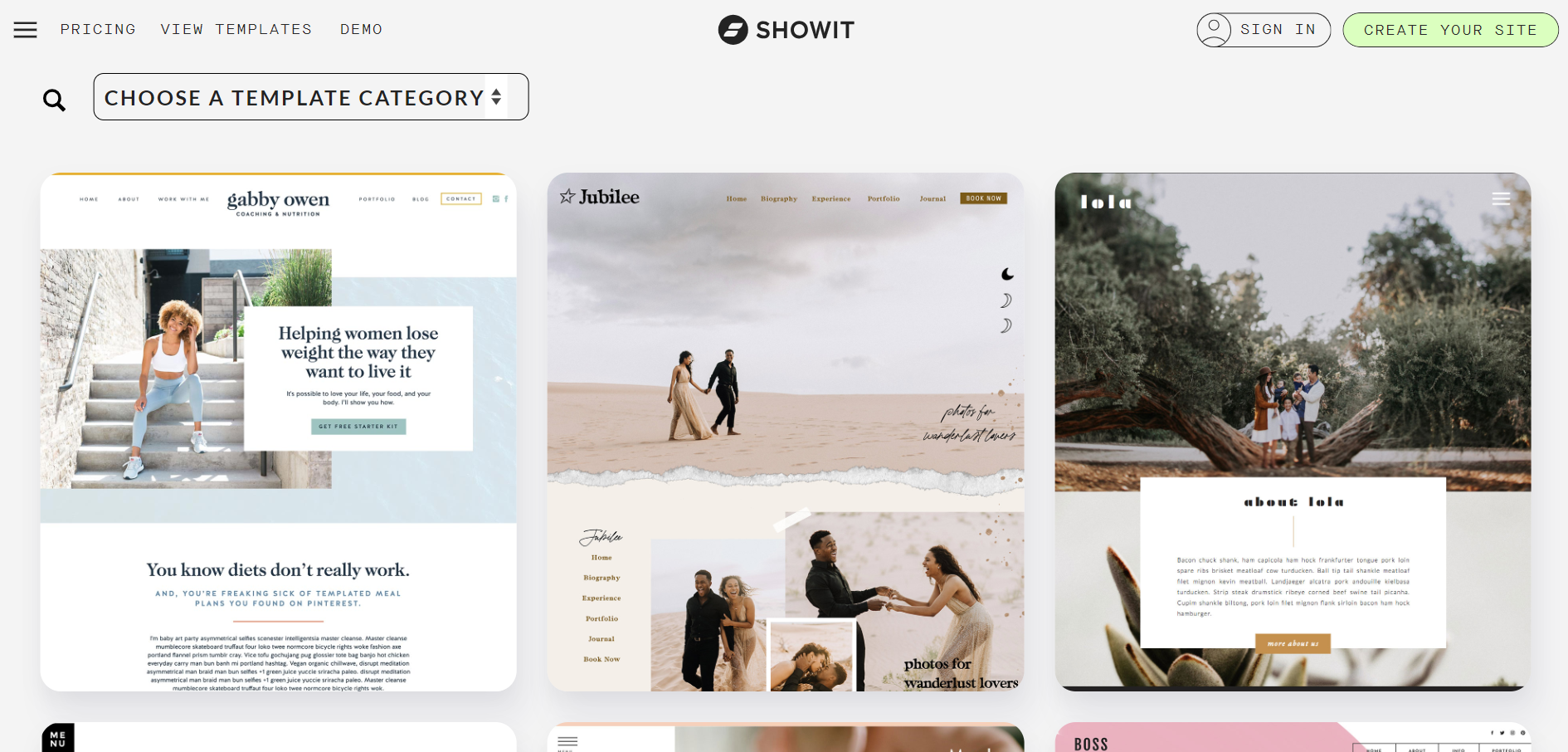

Get a head start on website creation with AI
Create a custom website tailored to your business needs 10X faster with 10Web AI Website Builder!
Ease of use
Ease of useReflects the platform’s overall user-friendliness.Score
Components:
- Learning curve (40%): Quickness and ease of getting started.
- Interface design (30%): Simplicity and intuitiveness of layout.
- User guidance (20%): Quality of tutorials and support.
- Flexibility (10%): Adaptability to various user skills.
 8.2
8.2
 8.6
8.6
🏆 Winner: Showit
. With a score of 8.6, Showit edges out GoDaddy (8.2) in terms of ease of use. Showit’s user-friendly drag-and-drop interface and high degree of design flexibility make it a favorite among creative professionals. However, GoDaddy’s comprehensive platform and user-friendly website builder make it a solid choice for beginners and non-technical users.
Learning Resources
🏆 Winner: Showit
. Both platforms offer a range of learning resources, but Showit goes a step further with a comprehensive training course and a dedicated support team.
For ecommerce
EcommerceMeasures the platform’s effectiveness in supporting online business activities.Score Components:
- Ecommerce themes and templates (20%): Variety and design of templates.
- Product management (25%): Ease of managing and organizing products.
- Payment options (25%): Variety and convenience of payment methods.
- Ecommerce features (20%): Features for managing an ecommerce store.
- Integration (10%): Compatibility with external e-commerce tools and services.
 7.2
7.2
 4.8
4.8
GoDaddy and Showit cater to different ecommerce needs. GoDaddy’s ecommerce features provide a user-friendly experience for setting up and managing online stores, with integrated payment processing, flexible shipping options, and comprehensive tools for product and order management. On the other hand, Showit is primarily a website builder focused on design, offering great flexibility and creative freedom, making it ideal for visually oriented websites rather than extensive e-commerce platforms. It includes basic ecommerce functions but lacks the comprehensive ecommerce features found in platforms like Shopify or WooCommerce.

|

|
|
|---|---|---|
|
Ecommerce themes and templates |
6.5 |
2.0 |
|
Product page customization |
6.0 |
2.5 |
|
Payment processing and commissions |
7.5 |
4.0 |
|
POS capabilities |
6.0 |
1.0 |
|
Payment gateways |
7.0 |
4.5 |
|
Product numbers |
7.0 |
3.0 |
|
Additional ecommerce features |
6.5 |
3.5 |
GoDaddy ecommerce features:
- Payment processing
- Shipping options
- SEO tools
- Email marketing features
- Social media integrations
- Detailed reports
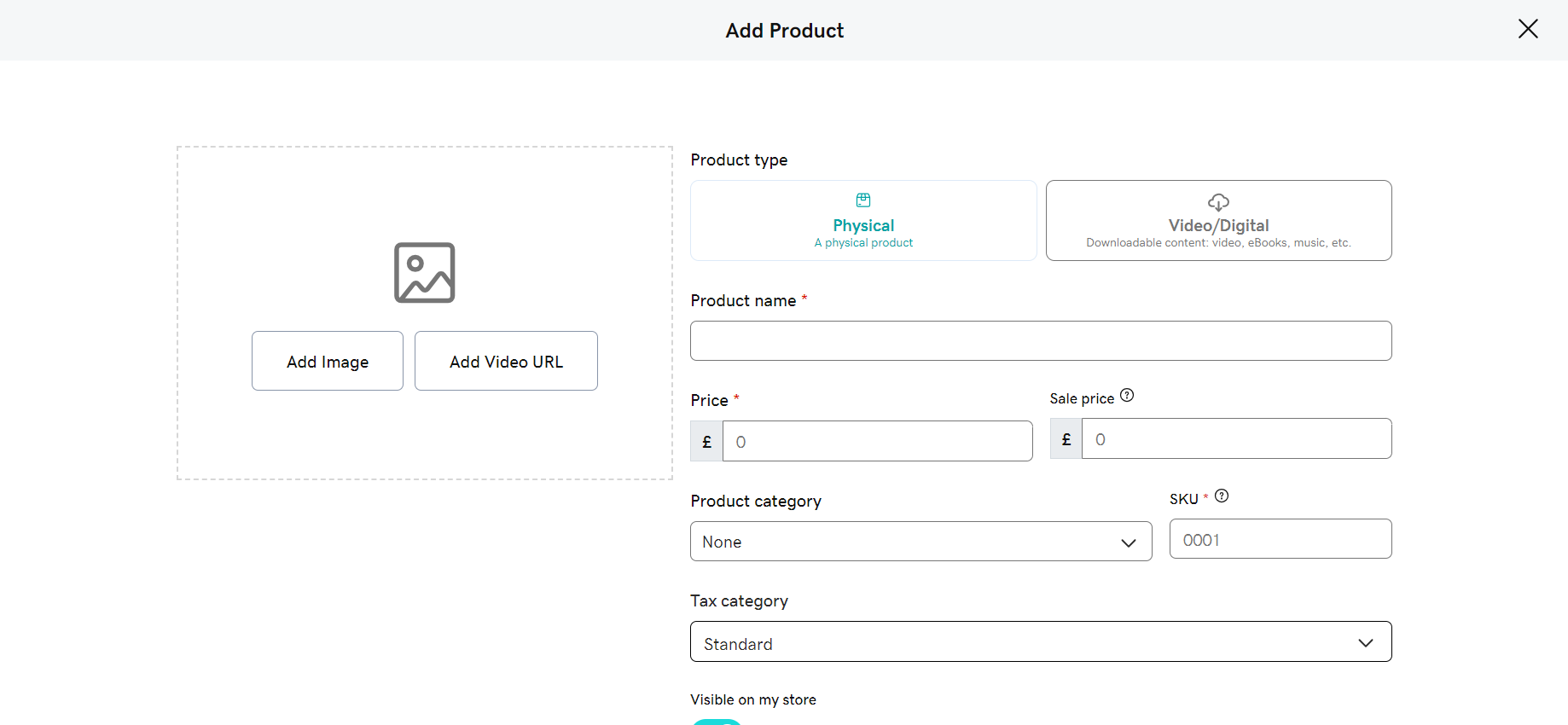
Showit ecommerce features:
- Shopify and WooCommerce integration
Ecommerce themes & templates
GoDaddy’s ecommerce themes, numbering around 70-80, cover diverse industries and styles, with categories including fashion, electronics, food, and more. While generally mobile-friendly with basic customization options, these themes may lack the niche variety and cutting-edge designs found on dedicated ecommerce platforms, and extensive design changes might necessitate coding knowledge within the builder’s framework. Showit, on the other hand, does not have any ecommerce specific templates.
Product page customization
GoDaddy’s ecommerce platform offers users basic customization options like editing content, adding images, and adjusting layouts. For advanced customization, coding knowledge is required, enabling features such as custom CSS, third-party app integrations, and the creation of unique product page templates. Additional features include managing product variations, organizing information with tabs, and implementing discount codes and promotions directly on the page. Showit has very basic ecommerce capabilities, primarily through its integration with WooCommerce and Shopify.
Payment processing
GoDaddy Payments provides a versatile solution for online, in-person, and phone payments with a tiered pricing structure. Generally, online transactions have the lowest fees (2.3% + 30¢), while in-person and manually entered transactions have slightly higher rates (2.3% + 0¢). While featuring a transparent pricing model, user-friendly Smart Terminal for in-person transactions, and a virtual terminal for remote payments, it may lack advanced Point of Sale (POS) features. Acting as its own payment gateway, GoDaddy Payments offers simplicity, but users requiring specific integrations with shopping carts or CRM systems may find limited support. Showit supports e-commerce by allowing integration with third-party platforms like Shopify Lite, ThriveCart, WooCommerce, and Podia, rather than offering direct payment processing or POS capabilities. Users can add e-commerce functionalities to their Showit sites using embed codes for “Buy Buttons” or similar features from these platforms. The choice of platform depends on the user’s specific needs, including product type, store size, and budget, as each platform has its own pricing and transaction fee structures. Additionally, the platform supports integration of PayPal pay button, allowing users to pay directly through their PayPal account.
Website Editors
Website EditorsEvaluates the platforms’ website building and editing capabilities.Score Components:
- Customization tools (40%): Range and power of editing features.
- Editor usability (30%): User experience within the editor.
- Design flexibility (20%): Freedom in layout and design changes.
- Update and maintenance ease (10%): Simplicity of updating and maintaining the site.
 6.7
6.7
 8.0
8.0
🏆
Winner: Showit
. Showit, with a score of 8.0, is designed for creating custom, responsive websites with a focus on ease of use, especially for photographers and creative professionals. It allows users to design their website visually with a drag-and-drop interface, eliminating the need for coding knowledge. Users can create highly customized pages by adjusting layouts, fonts, and colors, and can also incorporate multimedia elements like videos and images directly into their designs. Additionally, Showit offers deep integration with WordPress for blogging, enabling users to manage and publish blog posts within the same platform, providing a seamless experience from website design to content management.
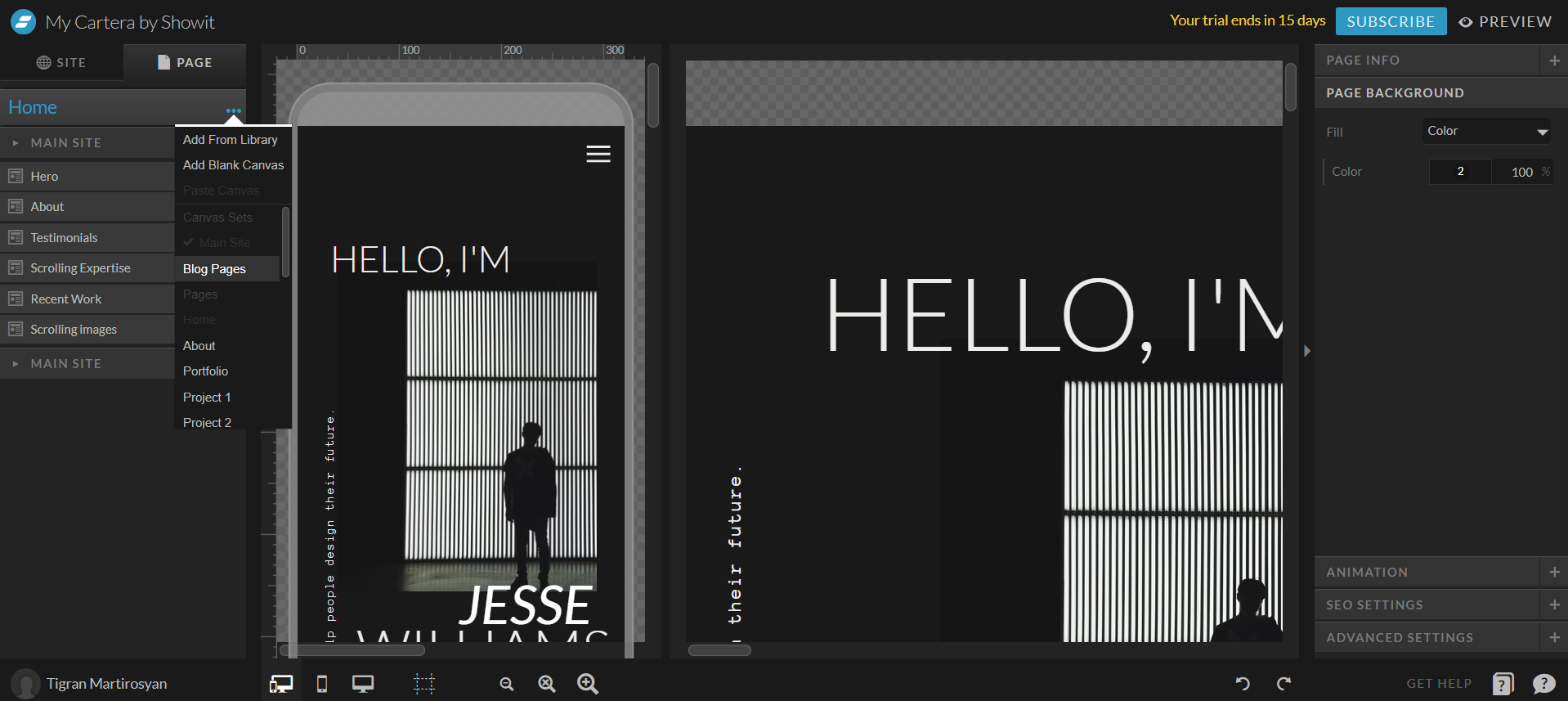
GoDaddy’s editor, scoring 6.7, is a user-friendly drag-and-drop tool enabling website creation without coding. It offers pre-designed templates, a mobile-friendly interface, basic SEO tools, and ecommerce integration, making it accessible for beginners, with affordable pricing plans and an all-in-one solution. However, it has some design limitations, basic features compared to dedicated platforms, a learning curve for extensive use, and potentially limited third-party app integrations.
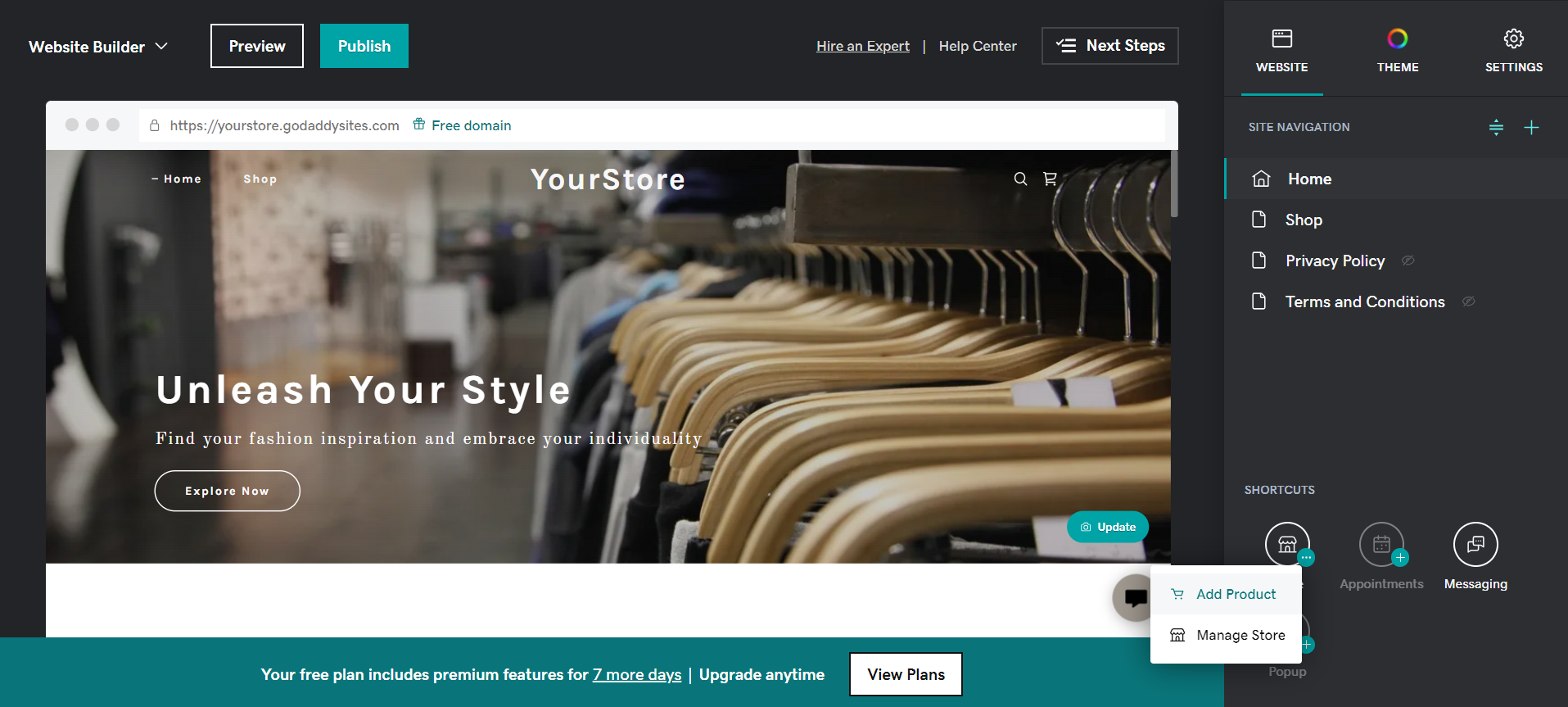
Mobile editor/app
 5.5
5.5
 0
0
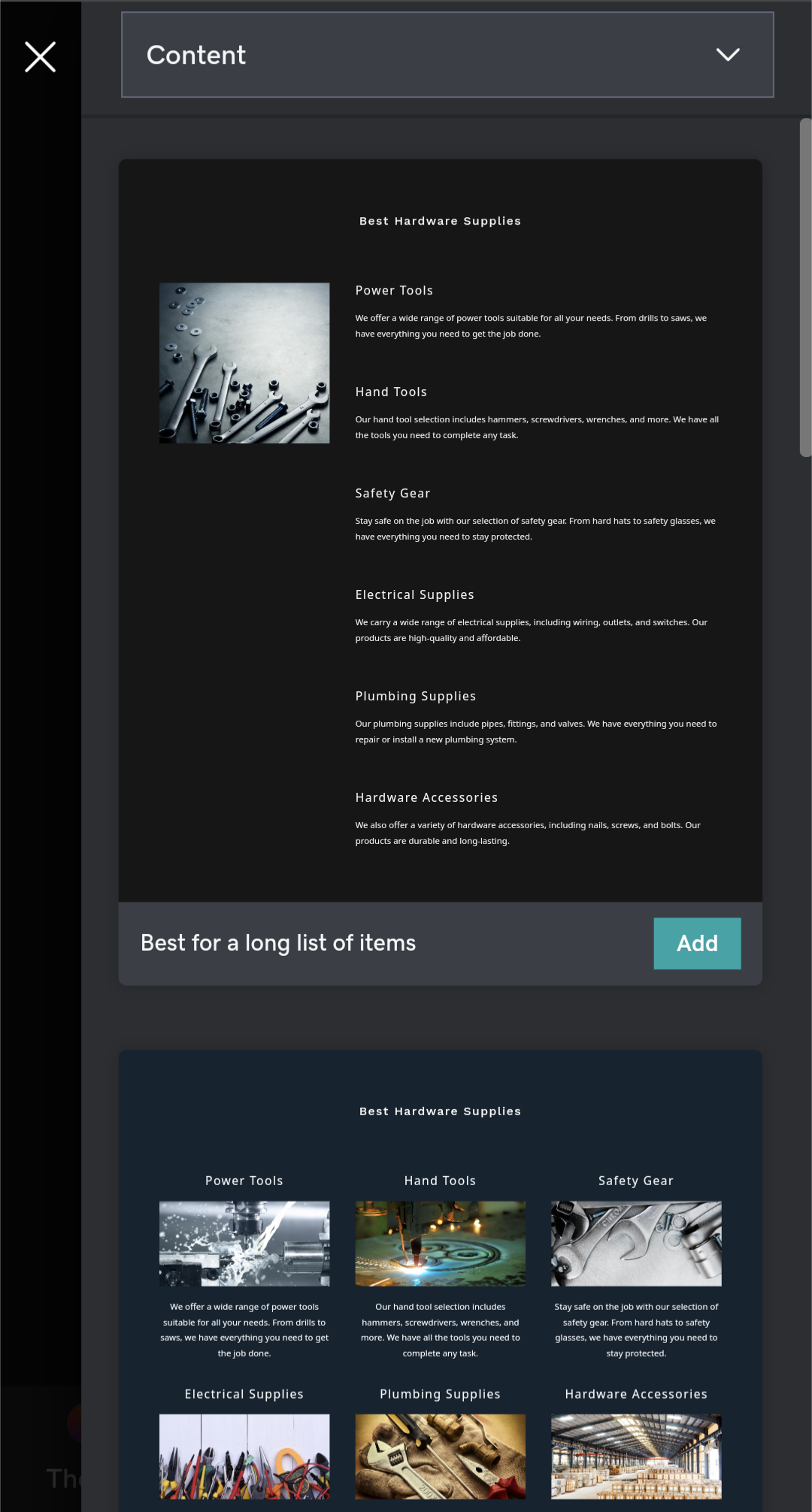
🏆
Winner: GoDaddy
. Neither GoDaddy nor Showit offer a dedicated mobile app for editing websites. However, GoDaddy allows users to log into their account and access the website builder through a mobile web browser, albeit with a slightly more constrained experience due to the smaller screen size. On the other hand, Showit does not support mobile editing at all, making GoDaddy the clear winner in this category.
Product testing options
Product Testing OptionsAssesses the options for trying out platform features before commitment.Score Components:
- Trial quality (40%): Extent and usefulness of the trial or free version.
- Feature accessibility (30%): How many features are available to test.
- Trial duration (20%): Length of the trial period.
- Ease of transition (10%): Smoothness of moving from trial to paid plans.
 8.1
8.1
 8.3
8.3
Overall Result
:
Showit Wins
. Showit scores slightly higher than GoDaddy with a score of 8.3 compared to GoDaddy’s 8.1. While both platforms offer a 30-day money-back guarantee, Showit provides a 14-day free trial where users can test all premium features. GoDaddy, on the other hand, does not offer a trial version but allows users to sign up for any paid plan and explore all the features, offering a full refund within 30 days if the user is not satisfied.

|

|
|
|---|---|---|
|
Free Plan |
Yes | No |
|
Trial Duration |
No (30-day money back guarantee) |
14 days |
|
Testing Premium Features |
Yes, within 30-day refund window |
Yes, during 14-day free trial |
Price
PriceLooks at the cost-effectiveness and value for money of each platform.Score Components:
- Plan value (40%): What each pricing tier offers.
- Transparency and clarity (30%): Clearness of pricing structures.
- Flexibility of plans (20%): Range of options to suit different budgets.
- Hidden costs (10%): Additional expenses not included in the plan.
 7.9
7.9
 7.9
7.9
GoDaddy and Showit have similar price scores, but GoDaddy offers a wider range of plans, including a free option. Showit’s plans are more expensive, but they are designed for high-traffic blogs and offer more advanced features.

|

|
|
|---|---|---|
|
Free |
Free ($0/month): Build a basic website with limited templates, storage, and features. Ideal for testing the platform. |
No offering at this amount. |
|
$0-$8 |
Basic ($5.99/month): More templates, custom domain support, email marketing, SEO tools, social media integrations, analytics. Ideal for personal websites and small businesses. Value for price: 6.5 |
No offering at this amount. |
|
$8-$10 |
Premium ($9.99/month): All Basic features + blog, ecommerce with product listings and payments, advanced marketing tools, and analytics. Ideal for businesses with online sales or growing web presence. Value for price: 8.0 |
No offering at this amount. |
|
$10-$18 |
Commerce ($15.99/month): All Premium features + advanced ecommerce tools like cart recovery, discounts, reviews, memberships, and unlimited products. Ideal for businesses with significant online sales and complex product offerings. Value for price: 9.0 |
Showit ($24/month): Ideal for sites without a blog. Includes 20GB storage and secure certificate. Regular design backups stored for 7 days. Value for price: 6.0 |
|
$18-$25 |
Pro ($19.99/month): All Commerce features + priority support, higher bandwidth, website security, and CDN. Ideal for businesses with high traffic and critical online presence. Value for price: 9.5 |
Showit + Basic Starter Blog ($29/month): For new blogs. Includes everything in the Showit plan, plus blog-specific features. 20GB storage, up to 10k monthly visitors, daily backups stored for 30 days, pre-installed plugins (no additional plugins are permitted), 1 WordPress user. Value for price: 7.0 |
|
$25-$30 |
No offering at this amount. |
Showit + Advanced Blog ($39/month): For migrating or high-traffic blogs with custom plugin needs. Includes everything in the Basic Starter Blog plan, plus up to 25k monthly visits, unlimited number of plugins, unlimited number of WordPress users, Free advanced blog migration from WordPress or Squarespace and FTP access. Value for price: 8.0 |
|
$30-$40 |
No offering at this amount. |
Showit + Advanced Blog 50k ($69/month): Includes everything in the Showit + Advanced Blog plan, with possibility to install custom WordPress plugins, 30 GB storage, up to 50k visitors monthly, and possibility to migrate Squarespace and WordPress blog posts. Value for price: 8.5 |
|
$60-$70 |
No offering at this amount. |
Showit + Advanced Blog 100k ($129/month): Includes everything in the Showit + Advanced Blog plan, with possibility to install custom WordPress plugins, 50 GB storage, up to 100k visitors monthly, and possibility to migrate Squarespace and WordPress blog posts. Value for price: 9.0 |
|
$100+ |
No offering at this amount. |
Showit + Advanced Blog 100k ($129/month): Includes everything in the Showit + Advanced Blog plan, with possibility to install custom WordPress plugins, 50 GB storage, up to 100k visitors monthly, and possibility to migrate Squarespace and WordPress blog posts. Value for price: 9.0 |
location. As a result in rare cases the prices displayed here can differ from the ones you see on their
websites.
Hosting quality
Hosting
qualityExamines the reliability and performance of the hosting solutions.Score Components:
- Uptime (40%): Consistency and reliability of website availability.
- Speed (30%): Loading times and performance.
- Bandwidth and storage (20%): Sufficiency of resources provided.
- Data centers (10%): Quality and distribution of hosting infrastructure.
 7.8
7.8
 7.3
7.3
Winner: GoDaddy
. GoDaddy offers a variety of hosting types, including shared, VPS, dedicated, and WordPress hosting, and guarantees an uptime of 99.9%. They have data centers in the USA, France, Germany, and the UK, and also provide cloud services through AWS. Showit, on the other hand, offers managed WordPress hosting with a 99% uptime guarantee, but does not disclose any information about its data centers.

|

|
|
|---|---|---|
|
Do they offer hosting? |
Yes, included in all of their plans |
Yes, Managed wordpress hosting, with daily backups and 20GB storage |
|
Data Centers: |
Data Centers in USA, France, Germany and UK Cloud Services Through AWS |
Showit does not disclose any information about its data centers |
|
Type of hosting: |
Shared Hosting, VPS Hosting, Dedicated, WordPress Hosting |
Managed WordPress hosting |
|
Uptime: |
99.9% |
99.9% |
|
Uptime Guarantee: |
Yes, 99.9% |
Yes, 99% |
Website Speed Optimization
Website Speed OptimizationEvaluates optimization of website loading timesScore Components:
- PageSpeed Score (30%): Google’s score indicating performance optimization.
- Loading Time (30%): The average time until a website is fully interactive.
- Mobile Optimization (15%): Optimization effectiveness for mobile devices.
- Resource Optimization (15%): Optimizing images, scripts, and other heavy resources.
- CDN Usage (10%): Use of CDN to enhance speed across geolocations.
 7.6
7.6
 5.4
5.4
🏆 Winner: GoDaddy
Both GoDaddy and Showit have strategies in place for website speed optimization, but GoDaddy’s comprehensive approach and higher website speed optimization score give it the edge in this comparison.

|

|
|
|---|---|---|
|
Focus |
CDN, Automatic Maintenance, Resource Optimization |
Optimization plugins, Caching |
|
Performance Tools |
Infrastructure upgrades, caching mechanisms, image optimization tools, automatic minification of code files |
Not disclosed |
|
Key Strategies |
CDN, Automatic Maintenance, Resource Optimization |
Optimization plugins, Caching |
|
Load Times |
Shared Hosting: 2-4 seconds, VPS Hosting: 1-2 seconds, Dedicated Server: 0.5-1.5 seconds |
Varies depending on optimization and website complexity |
|
Page Speed Scores Range |
Shared Hosting: 50-70/100, VPS Hosting: 70-85/100, Dedicated Server: 80-95/100 |
Not disclosed |
|
Core Web Vitals Improvement |
Enhanced platform through infrastructure upgrades, improved server infrastructure and data centers, effective caching mechanisms, image optimization tools, and automatic minification of code files |
Not disclosed |
GoDaddy has enhanced its platform through infrastructure upgrades, including improved server infrastructure and data centers, resulting in faster loading times. Additionally, the implementation of effective caching mechanisms, image optimization tools, and automatic minification of code files contribute to a smoother user experience and improved Core Web Vital metrics. The website builder features optimized templates and code structures for efficient rendering, further enhancing overall performance.
Showit, on the other hand, does not disclose any information on their Core Web Vitals improvements. Their strategies for speed optimization include optimization plugins and caching. However, the load times and PageSpeed scores vary depending on optimization and website complexity.
Get a head start on website creation with AI
Create a custom website tailored to your business needs 10X faster with 10Web AI Website Builder!
Plugins and integrations
Plugins and integrationsMeasures the range and effectiveness of additional plugins and integrations.Score Components:
- Variety of options (40%): Range of available add-ons.
- Integration smoothness (30%): Ease of integrating plugins into the site.
- Quality of plugins (20%): Functionality and reliability of the options.
- Custom integration capabilities (10%): Support for custom or third-party integrations.
 7.3
7.3
 5.8
5.8
🏆 Winner: GoDaddy.
With a score of 7.3, GoDaddy offers a more comprehensive set of plugins and integrations compared to Showit, which scores 5.8. GoDaddy’s versatility is evident in its range of marketing, ecommerce, and business productivity integrations. Showit, while offering a variety of plugins, is more limited and its use of plugins is contingent upon the subscription tier.
Marketing Features
Design FunctionalitiesRepresents how well each platform allows for creative design and customization of websites.Score Components:
- Template Variety (30%): Range and quality of design templates.
- Customization (30%): Flexibility and options for design alterations.
- User Interface (20%): Ease and intuitiveness of the design process.
- Responsiveness (10%): Adaptability to different devices and screen sizes.
- Innovation (10%): Unique design features and tools.
 7.3
7.3
 7.2
7.2
🏆
Overall Winner: GoDaddy
. GoDaddy edges out Showit with a slightly higher score, offering a comprehensive suite of marketing tools, including SEO, email marketing, blogging, social media integration, analytics and reporting, and ads and promotions. Showit also offers a robust set of marketing features, particularly excelling in email marketing through third-party integrations and blogging through WordPress integration.

|

|
|
|---|---|---|
|
SEO Tools |
|
|
|
Email Marketing |
|
Yes (through third-party integrations) |
|
Blogging |
|
Yes (through WordPress integration) |
|
Social Media Integration |
Tools for social media linking and content sharing |
|
|
Analytics and Reporting |
Basic analytics with more detailed insights on higher plans |
Yes, through integration of Google Analytics |
|
Ads and Promotions |
Features to create and track online ads, including Google Ads |
Yes, through third-party integrations |
Customer Support
Customer supportEvaluates the quality and availability of support options.Score Components:
- Response time (40%): Speed of support responses.
- Support quality (30%): Effectiveness and helpfulness of the support.
- Availability (20%): Range of support channels (phone, chat, email).
- Resource richness (10%): Quality of self-help and educational materials.
 8.5
8.5
 6.4
6.4
🏆 Winner: GoDaddy
. GoDaddy takes the lead in this category with a customer support score of 8.5, compared to Showit’s score of 6.4. GoDaddy offers 24/7 phone support in multiple languages, around-the-clock live chat, and email assistance. They also provide dedicated account managers for enterprise customers, ensuring personalized assistance in account management and technical issues.
Showit, on the other hand, provides customer support via email and chat during business hours from Monday to Friday, with limited support on weekends. While they do offer an enterprise level custom plan, there’s no specific information on enterprise level support.
Security
SecurityLooks at the platforms’ security measures and data protection.Score Components:
- Data protection (40%): Safeguards for user and customer data.
- SSL and encryption (30%): Implementation of secure connections.
- Compliance (20%): Adherence to industry security standards.
- Regular updates (10%): Frequency of security updates and patches.
 6.8
6.8
 8.3
8.3
🏆
Winner: Showit
. Showit takes a comprehensive approach to security, with robust measures in place to protect user data and website integrity. This includes adherence to GDPR guidelines, secure and redundant data storage through Amazon’s S3, daily backups, and robust security features for hosted websites. Showit also provides additional protections for WordPress-integrated sites and offers guidance on best practices in website security.
GoDaddy, while offering a range of security features such as SSL certificates, malware scanning, and web application firewalls, has a more limited approach to data privacy and protection. This is particularly evident in the context of compliance with regulations like HIPAA or GDPR. Despite these limitations, GoDaddy’s security features, including DDoS protection and vulnerability scanning, provide a solid defense against online threats.
AI Capabilities
AI capabilitiesMeasures the effectiveness of AI-driven features and tools.Score Components:
- Automation efficiency (40%): Impact of AI on streamlining processes.
- Personalization (30%): AI-driven customization for users or customers.
- AI-Assisted design (20%): Role of AI in website design and functionality.
- Data analysis (10%): Use of AI in interpreting user data and analytics.
 7.5
7.5
 0
0

|

|
|
|---|---|---|
|
Personalized Design |
|
|
|
SEO Optimization |
|
|
|
Customer Behavior Analysis |
|
|
|
Sales Predictions |
|
|
|
Inventory Management |
|
|
|
Content Generation |
AI-generated product descriptions, customer service messages, and social media ads |
|
🏆 Winner: GoDaddy
. GoDaddy, with a score of 7.5, utilizes AI mainly to enhance the ecommerce experience and content generation. Its AI features focus on generating product descriptions, customer service messages, and social media ads. These tools are part of GoDaddy’s initiative to leverage generative AI, aiming to save business owners time and effort, allowing them to focus more on growth and achieving better work-life balance.
Showit, on the other hand, does not have any AI capabilities. This lack of AI features might limit the functionality and efficiency of the platform, especially for users who are looking for automated and intelligent solutions for their website building needs.
User Management
User ManagementAssesses the platforms’ capabilities in managing user roles, permissions, and accessibility.Score Components:
- Role Customization (40%): Flexibility in creating and defining user roles and
permissions. - Ease of Management (30%): User interface and tools for managing users.
- Access Control (20%): Effectiveness of access control measures for different user
levels. - Scalability (10%): Ability to manage a growing number of users efficiently.
 7.3
7.3
 6.7
6.7
🏆 Winner: GoDaddy
. Both GoDaddy and Showit offer different user roles and access levels, but GoDaddy’s user management capabilities are more comprehensive.
- GoDaddy’s number of users who can edit a website varies based on the hosting plan and website building tool. For Website Builder (GoCentral and Websites + Marketing), the free plan permits one user, while Deluxe and Ultimate plans allow up to five users with full editing permissions. In WordPress Hosting, there’s default support for unlimited users, each with customizable permission levels controlled through the WordPress dashboard.
- Showit allows only one user on lower plans, on it’s Showit + Advanced Blog plan the platform allows unlimited number of with different access levels.
GoDaddy User Roles and Access Levels:
| Role | Description | Access Highlights |
|---|---|---|
| Account Holder | The primary owner of the GoDaddy Website Builder account. | Full access to all website builder features, domain management, hosting settings, and account settings. |
| Delegate Access | Users granted permission by the account holder to access specific parts of the GoDaddy account. | Can be given varying levels of access, from managing domains and products to making purchases on behalf of the account holder. |
| Website Editor | Users with permissions to edit and update the website through the Website Builder interface. | Can customize the website, add or edit sections (e.g., image galleries, menus), and update content. |
| Online Store Manager | Specifically for websites with e-commerce capabilities, managing product listings, orders, and payments. | Access to manage the online store, including product listings, coupons, shopping cart, shipping, and payments. |
Showit User Roles and Access Levels:
| Role | Description | Access Highlights |
|---|---|---|
| Administrator | Users with full access to all administration features, including Elementor settings. | Can edit all content, Access to Elementor settings, Can install plugins and themes, Can manage users |
| Editor | Users who can manage and publish content including pages and posts. | Can edit pages/posts created with Elementor, Cannot access Elementor settings, Can manage categories, tags, and links, Can moderate comments |
| Author | Users who can publish and manage their own posts. | Can create posts with Elementor, Cannot edit pages, Limited access to media library, Cannot access Elementor settings |
| Contributor | Users who can write and manage their own posts but cannot publish them. | Can create content with Elementor, Cannot publish or edit pages, No access to Elementor settings, Submissions require review by higher-level roles |
Additional Features

|

|
|
|---|---|---|
|
SSL Certificate |
|
|
|
Custom Domain |
|
|
|
Free Custom Domain Included |
|
|
|
International Domains |
|
|
|
Mobile Responsive |
|
|
|
Page Speed |
|
|
|
Website Builder Mobile App |
|
|
|
Convert a Website To An App |
|
|
|
Website Analytics |
|
|
|
Multilingual Sites |
|
|
|
Multiple Users |
|
|
User Feedback
Users generally praise GoDaddy for its affordability, reliability, and user-friendly interface, particularly in domain registration and hosting services. However, concerns include occasional interface changes, perceived slowness in website hosting, and dissatisfaction with pricing increases.
Unfortunately, there is no user feedback summary available for Showit at this time.
The making of this blog
We followed a clear, step-by-step process to write and research this article.
FAQ
Which platform is better for creative professionals, GoDaddy or Showit?
Can I use GoDaddy for an ecommerce website?
How do GoDaddy and Showit compare in terms of ease of use?
What are the main differences in hosting quality between GoDaddy and Showit?
Which platform offers better customer support, GoDaddy or Showit?
Are GoDaddy and Showit suitable for users without coding knowledge?










